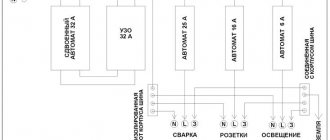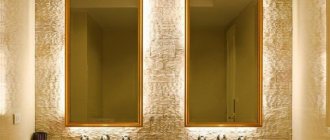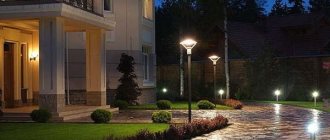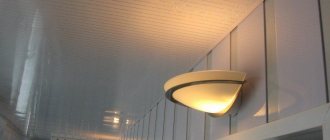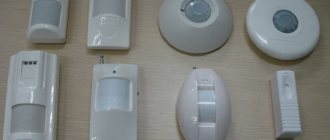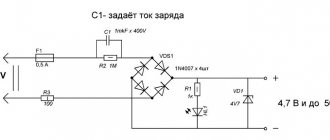The right light for the garage
Garage.
Today it is not only a place for a car, but in many cases a workshop, a storage room or even an entire scientific laboratory. Many owners of such real estate are concerned about the issue of proper garage lighting. It should not only be comfortable for the eyes, but also fireproof, because flammable liquids, such as car oil or fuel, are often stored in such rooms. The above listed requirements are fully met by GLANZEN LED spotlights. These devices do not heat up, do not emit toxic substances hazardous to the human body and the environment, and at the same time shine several times brighter than any other lighting device. Garage lighting requirements
When arranging lighting in the garage, you must first of all follow the safety rules when working with electrical appliances. And for even greater comfort there are a number of simple requirements:
- Choose lighting fixtures with a uniform luminous flux
- When installing lighting fixtures, check that the light coming from them covers the entire required area without glare or dark spots
- In rooms with high humidity, for example in an inspection pit, the voltage of lighting devices should not exceed 12V
- The illumination level must comply with the requirements of SNiP
- The devices are installed in such a way that the light flux does not hit the eyes directly. In addition to the obvious inconvenience, this factor can be hazardous to health.
- Lighting must meet all fire safety standards and requirements.
5 reasons to choose LED lighting for your garage
- GLANZEN LED spotlights are very economical: they consume a minimum of energy with a maximum brightness of 8000 Lumens. This is especially true for floodlights with a motion sensor.
- GLANZEN LED spotlights are completely fireproof and are provided with additional protection. They do not heat up and do not emit hazardous substances.
- GLANZEN LED spotlights are durable and have an almost unlimited switching life. Thanks to improved SMD technology, the floodlight diodes have additional protection against degradation.
- GLANZEN LED floodlights have IP 65 protection. This means that they can be successfully used, including in garages.
- With the help of GLANZEN LED spotlights you can create autonomous lighting both indoors and outdoors.
How to make LED lighting in your garage yourself
GLANZEN LED spotlights are easy to install yourself. The design of the devices is specially created for quick installation both indoors and outdoors. But the required number of spotlights depends on the area of the room.
Especially for those cases when stationary installation of lighting devices is not required, it is convenient to use portable LED spotlights. They are equipped with a practical, stable frame and non-slip handle. Such spotlights are an ideal solution for illuminating hard-to-reach places during gardening, repair and other types of work.
Method for calculating the required number of LED spotlights No. 1 Calculation using the formula O=M x P/K , where
- O – lighting
- M – lighting fixture power per 1 sq.m.
- P – garage area
- K – number of lighting fixtures
To calculate the number of LED spotlights, you simply need to rearrange the values in the formula.
Method for calculating the required number of LED spotlights No. 2
Calculation based on the technical standard for the power of a lighting fixture per 1 sq.m.
According to the document, 1 sq.m of garage area accounts for 4W of LED light source power. To calculate, you need to multiply the total area of the room by the technical standard for lighting power in terms of 1 sq.m.
A simple example. Let's assume that the garage area is 20 sq.m. To calculate, we multiply 20 sq.m by 4W and as a result we get the required amount of general lighting equal to 80W. Thus, to install the correct light in such a garage, it is necessary to install 4 GLANZEN floodlights of 20 W. For example, GLANZEN FAD-002-20S. Or 8 GLANZEN 10W floodlights, such as GLANZEN FAD-001-10.
Note.
- The lighting for the garage pit is calculated separately, taking into account the size of this area.
- When calculating the required general lighting for garages whose height exceeds 2.5 m, you need to add + 50% of the calculated amount for every 50 cm of height.
Conclusion
Do-it-yourself garage lighting is accessible to everyone. However, comfort and safety ultimately depend on the choice of lighting fixtures and the correctness of the calculations. GLANZEN LED spotlights will delight the consumer not only with high quality assembly and operation, but also with a wide selection of models. The brand's lighting products are presented in several variations: classic spotlights, devices with a motion sensor, and devices on a stand with a convenient portable handle. The entire range of GLANZEN LED floodlights is presented in our CATALOG.
Convince yourself of the high performance and quality of GLANZEN LED floodlights by looking at this short review.
Step-by-step instructions for organizing lighting in the garage
To ensure adequate lighting of the room, the garage owner must adhere to the proposed sequence. The type of lighting equipment is pre-selected.
Choosing a wiring diagram in the garage
The electrical wiring diagram is drawn up based on the type of lamps (spot or general) and the needs of the garage space. Decide on the location of the wiring (hidden or external). Draw a general view of the garage on the diagram and note on it:
- Installation location of the distribution meter and panel;
- Places for laying cables - on the walls or ceiling;
- Installation points for distribution boxes, sockets and switches;
- Connection points for general and local lighting;
- If necessary, connection to any equipment.
After this, all data is transferred to the wiring diagram. An example of such schemes is shown in the figures.
Rice. 1: Garage lighting scheme
Figure 2: Lighting diagram without pit
Rice. 3: Lighting circuit for two terminals
Calculation of the number and power of lighting points
First, determine the lighting power required for the garage. For example, you chose 20 W LED lamps and decided that 5 W would be enough for one square meter. Measure the area of the garage, for example, the dimensions of the garage are 6 m × 4 m = 24 m2.
The number of points is calculated by the formula: N = (S × Pm)/Pl, where S is the area of the entire room, Pm is the lighting power for one square meter, Pl is the power of one light bulb. For the above parameters, we obtain the calculation N = (24 × 5) / 20 = 6. Accordingly, you will need to install 6 lamps, but their location in the garage should provide uniform lighting, so the next step is to choose the place and method of their location.
Selecting the location of light sources
Depending on the chosen type of lamps and the area of the room, lighting can be achieved with one lighting device in the center of the ceiling. But this will not always provide the required level of illumination near the wheels, bumpers, under the hood, etc. Therefore, when choosing the location of artificial lighting in the garage, you should be guided by the following principles:
- Spotlights should not only be placed at an equal distance from each other, but also be directed strictly into the work area from different sides. Avoid unnecessary dispersion of flow on walls and ceilings.
Rice. 4: Example of the location of lamps on the ceiling - In addition to general lighting devices, you can use portable lamps that will provide light in hard-to-reach places. For them, install a sufficient number of accessible sockets around the perimeter.
Figure 5: Example of portable light installation - If you install one lamp on the ceiling, then it is better to mount it on a rotating bracket, which will allow you to change the angle and redistribute the light flux.
- With a ceiling height of 3 m or more, it is necessary to provide light from three levels at different heights, for example, the first at a height of 0.4 - 0.5 m from the floor, the second 0.75 - 1 m and the third 1.5 - 1 .8 m. The specific height should be selected on site, in accordance with the individual characteristics of the room.
- If there is a metalworking table or workbench above it, it is advisable to install a separate lighting element aimed at the surface of the table, movable spotlights and a group of sockets for connecting power tools.
Rice. 6: Table lighting
Required tools and materials
To mark the walls for wiring, use a level and marking pencils. When drawing lines on the walls for grooves, placement of cable ducts or corrugations, mark the attachment points for lamps and sockets.
From the tools, take those that will help in installing the lighting and mounting it: a hammer drill for drilling walls and a screwdriver for installation work. A screwdriver can be replaced with a regular screwdriver, but it will require much more effort and time.
The materials you will need are lighting devices (lamps, lamps, LED strips) and switches for them. For the point of entry and distribution of the electrical network, take a panel with an RCD. Sockets and electrical wires are selected based on the load on them. To do this, the power of the devices powered from them is summed up, from which the minimum cross-section is determined according to Table 1.
What to consider when choosing
In a small, almost enclosed space with many flammable substances and objects, such as a garage, lighting must meet certain requirements:
- the presence of several sockets;
- uniform distribution of light bulbs or other light sources throughout the entire area;
- installing lamps above the most frequently used areas;
- reliable protection of light sources from water or mechanical damage;
- energy-saving lamps, since the light is constantly on.
This will ensure comfort in the garage and fire safety.
Types of lighting fixtures
Lamps on the market vary in power, design, and cost. Let's evaluate the popular types.
Incandescent lamps. Familiar, budget classic. However, it loses to the new generation of lamps in other respects: high energy consumption with a short service life, uneven light distribution. When it burns out, it can spark, which can lead to a fire. It heats more than it shines, so it is not suitable for a garage.
Luminescent. Known as fluorescent lamps. They are wall or ceiling mounted. The latter scatter light more widely. They are economical, give a uniform luminous flux, but voltage drops make them dim. They may flash during the process; in a cold room they do not always light up.
The main disadvantage: they contain mercury, the vapors of which, when the lamp is on, are dangerous to humans.
However, low energy consumption, good brightness, and long service life make fluorescent lamps one of the most profitable, but only conditionally suitable for a garage.
LED - new generation, the best garage option. Let's take a closer look at it.
Types of light sources
When choosing a lamp or other light source, you need to pay attention to several points: equipment safety, operating life, protection from moisture and dust, resistance to temperature changes. Therefore, you need to evaluate all the pros and cons of each type and make the right decision.
Types of lamps
Various options are suitable for a garage, but you need to take into account the conditions of use and the features of the structure. Based on them, you can choose one of the following types:
- Incandescent lamps used to be installed in all garages, but today they are rarely used due to high electricity consumption and short service life. The filament does not produce very high-quality light and distributes it unevenly. Garage lamps are often bulky due to the large diffuser and massive body. During operation, they become very hot, which creates additional danger.
Example of incandescent lighting - Halogen light bulbs are advanced products with a tungsten filament and an inert gas pumped into the bulb. The light from them is much brighter, but the electricity consumption is also high. During operation, the surface gets very hot, so you definitely need a lampshade; this type does not tolerate shocks, voltage surges, or dust, so it is not suitable for the garage. A plus is the ability to use low-voltage lamps operating on 12 V through a power supply.
- Fluorescent lamps provide bright light without consuming much electricity. They can be either in the form of flasks or in a compact design for a standard cartridge. Suitable only for heated garages, since at temperatures below 5 degrees they work poorly and quickly fail. Another drawback is the mercury vapor inside, which evaporates into the air when the flask is damaged.
- LED lamps and luminaires consume the least amount of electricity and provide even, flicker-free light. You can choose different color temperatures, which is also important for comfort. For good visibility, it is better to choose cool colors that provide bright, uniform lighting. Instead of lamps, you can use lamps or LED strips, which can serve as backlight or full illumination of individual zones.
LED lighting is the safest and most economical to date.
You can combine different options if it gives a good result. But if possible, it is better to equip the garage with low-voltage LED lighting to ensure safety. A good LED garage lamp is more expensive, but due to energy savings and a long service life, it will ultimately cost less.
How do diode lamps work?
The light source of such a lamp is a lamp consisting of diodes. They are assembled into a circuit that is connected to the control circuit via a power supply.
During operation, although slightly, heat is generated, so the design provides a radiator to remove it. It ensures stable, long-term operation of the diodes and the lamp.
Garage lighting with LEDs involves the use of individual lamps or strips of diodes.
Ceiling structures are more suitable for a garage, as they better illuminate the entire space. Wall-mounted lighting illuminates work areas that require visual load (table, workbench). High-quality illumination for the inspection pit can be created using a mobile LED source.
There are several of them, including those that are especially important for the isolated space of the garage. Advantages of LED devices:
- Energy consumption, and with it lighting costs, are reduced several times: tenfold compared to an incandescent lamp and threefold compared to a fluorescent lamp.
- They light up immediately and do not flicker later.
- The light emitted by an LED lamp is vibrant and rich.
- Eternal, in comparison with other models, service life - about 70-90 thousand hours (almost 10 years of continuous operation) of high-quality lighting.
- Environmentally safe: without mercury or other toxic substances.
- Do not burn out when switched on and off frequently.
- Suitable for use in cold or hot conditions.
- Easy to install: the ceiling lamp can be installed in minutes.
- Fireproof, since the diodes hardly heat up during operation.
- To protect against voltage surges, network overloads or short circuits, they are equipped with special drivers.
Thus, LED garage lighting is the best and safest. The costs of purchasing its sources and arrangement are considerable, but they pay off quickly, saving the owners’ nerves.
Despite the numerous advantages of such lamps, they have small disadvantages that it is advisable to take into account during installation:
- the flow of light is less bright (compared, for example, with incandescent lamps), narrowly focused, so the lighting points are installed more densely; more of them are needed for the same area than ordinary ones;
- In wet rooms, only portable models operating on low voltage are used.
A relative disadvantage is the high price. However, this is offset by extremely low power consumption and a long service life.
How to calculate lighting in a garage with LED lamps?
Every garage needs lighting , this does not depend on the frequency of its use. Lighting must be of high quality and safe. Today, the market offers a wide selection of lighting products .
There are many options for organizing lighting in your garage. But it should be taken into account that garage premises have their own standards , which are noticeably different from, for example, the norms of a residential or industrial premises.
One of the fairly popular (but expensive) solutions is
LED lighting .
This option has gained its popularity due to a number of advantages. LEDs are extremely durable, with some lasting 70-80 thousand hours .
Lamps of this type do not heat up during use, which means they meet high fire safety requirements.
This is especially important for garages, since fuels and lubricants .
LED garage lights are designed to last through many on/off cycles. They are environmentally friendly - they contain no mercury. In addition, LEDs are resistant to cold and heat.
To calculate lighting, you can use the standard equation that is used for incandescent lamps. The equation looks like:
O = M x P/c , where
M – power of the lighting device (per square meter);
P – area of the garage;
k – number of lamps/devices;
O – illumination, the result of calculations.
But calculating power can be somewhat simpler; for this you need to use one rule. According to it, one square meter of garage space should have 20 watts of power . Here's an example:
There is a garage with an area of 30 square meters (6x5 meters). The area must be multiplied by 20 watts , we get 600 watts . This value is the norm for a garage room with dimensions of 6x5 meters .
After the calculations, you have to make a choice - what power lighting devices should be used to create lighting. Let's say 60-Watt lamps were purchased, then for the entire garage you will need 10 lamps (600/60).
But there is an important nuance - the correspondence between the power of
LED lamps and conventional incandescent lamps.
LEDs may have much less power, but have a good luminous flux .
For example, a 20-watt incandescent lamp corresponds to an LED analogue with a power of only 2-3 watts. They give the same luminous flux.
For the example with 60-watt light bulbs, LEDs with a power of 8-10 watts are suitable. Thus, to create lighting in a garage area of 30 square meters, you will need 10 LED lamps with a power of 8-10 watts.
Varieties
LED garage lights are selected based on size, shape, and connection method. The main technical characteristics of the products are as follows:
Connection methods. LED lamps for the garage are selected taking into account the network voltage. If the electrical wiring is 220 volts, then sources are installed that are designed for a similar indicator and with a regular base. If there is no wiring, 12 volt models with a power supply are suitable. Lighting can be supplied from the mains through a unit or from a battery.
Power. For an individual light element it can be up to 24 watts, and the brightness is the same as that of incandescent lamps up to 150 watts.
Classification of LED devices
For LED lighting in the garage, LED strips and lighting fixtures are used (they can be placed on the ceiling or wall).
Devices may differ in the type of base, the number and technical parameters of light bulbs, and the price tag in the store.
There are built-in, overhead and point models. Ceiling lights are most often used, as they are best suited for the comprehensive lighting of the space required in the garage.
Main technical characteristics of LED light sources:
- Rated power. For each source, the power rating can vary from 1 to 24 watts. Moreover, the brightness of the glow will be comparable to 20–150 watts for a conventional incandescent light bulb.
- Connection methods. Depending on the equipment manufacturer, different voltage levels are offered when connecting to electrical networks. Specific parameters are indicated on the box with the product.
If the wiring in the garage is designed for 220 volts, you can get by with a standard base. However, if the wiring has not yet been done, it is recommended to opt for 12-volt lamps and a power supply (or car battery). This will provide some of the benefits noted above, including human safety and fire safety.
Lighting in the garage: how much is needed
Having decided to make lighting in the garage with your own hands, you need to calculate the total power of the light sources. It is calculated according to the rule: twenty watts per 1 square meter of room. For example, in a garage with dimensions of 6 x 7, that is, 42 square meters. m, it will be 42 x 20 = 840 watts. If we are talking about ordinary lamps, then you will need, for example, fourteen 60-watt light bulbs.
The same luminous flux as a 60-watt incandescent lamp is produced by an 8-10-watt LED. That is, you need to buy 14 LED lamps of this power. The calculations are valid for a room height of up to 250 cm (if more, then multiply by another 1.5).
When installing LED lighting in a garage, it is better to use two systems - a general one (for the entire room) and a local one (for especially important places), and provide each zone with its own switch.
Garage Lighting Options
Depending on the type of device, lighting in the garage can be performed:
- Incandescent lamps;
- Fluorescent lamps;
- Halogen lamps;
- LED lighting devices.
The main difference between the above options is the ratio of the generated luminous flux in Lumens per 1 Watt of electricity. Therefore, before choosing a specific type of permanent lighting fixture, consider the pros and cons of each.
Advantages and disadvantages of lighting devices.
Incandescent light bulbs have a relatively low cost and are much less capricious to operate. But, in comparison with other types of lamps, they provide a luminous flux of only 7 - 17 Lm/W. They are also afraid of depressurization of the glass flask.
Fluorescent lamps are many times more expensive than incandescent lamps, but they produce about 45 Lm/W, which makes them much more economical. But the glass bulb of such a lamp is filled with a mixture of gases and mercury, which can cause harm if depressurized. Another significant drawback is that the lamp requires time to warm up until the declared level of luminous flux is achieved. And at a temperature less than +5ºС, such a lamp does not light up well.
Halogen lamps produce from 15 to 22 Lm/W, but unlike the previous ones, they must be powered from a low voltage - 12 V. Also, these lamps are afraid of touching with bare hands, which is why they are very demanding during installation and operation.
LED lamps can provide about 120 Lm/W, which is why they are considered the most economical lamps. An important advantage of LED spotlights is their independence from depressurization of the bulb - LEDs will provide the same illumination even if the bulb is broken. The disadvantages of such lamps include sensitivity to the shape and magnitude of the supply voltage.
Ribbon or lamp?
The most popular types. Tapes are optimal for illuminating large spaces, lamps - for specific areas.
It is a board with LEDs. Operates on low voltage direct current. Therefore, to connect to a network with standard 220 V, you need a converter that lowers the voltage to the one required for the tape. It runs on mains power or battery power.
Installation of the tape is simple, since it almost always has double-sided tape. All the work consists of gluing it to the surface. To ensure uniform lighting, stick two longitudinal strips on the walls plus one on the ceiling.
Lamps
They are a collection of lamps in one housing. A significant advantage of many of their types compared to tape is the presence of a built-in voltage converter.
They are similar in design and installation method to incandescent lamps. It is no coincidence that LED lamps compatible with a conventional socket have become the most popular.
Both solutions are good for the garage: lamps and modern lamps instead of outdated ones.
LEDs are a new level of lighting that Ilyich’s bulbs cannot compete with. They are popular due to their very long service life (about ten years), efficiency, and safety. For a garage with its abundance of fuels and lubricants, other flammable substances and objects, this is the best option.
Possible options
Let's look at the two most common lighting options using LEDs .
Ribbon
LED strip is a lighting device based on LEDs. The structure is a flexible board on which LEDs are located. The width of such a tape varies between 8-20 millimeters. The thickness is 2-3 millimeters. The tape is sold in the form of rolls , the maximum length is five meters. Tapes vary in color and luminous flux.
There are devices on the market with monochrome and color lighting. Color temperature can vary greatly - minimum 2700 K , maximum 10000 K.
The LED strip in the garage operates on direct current with a voltage of 12 or 24 Volts. To connect the lighting device to the mains, you will need a special converter - a device that converts a standard voltage (for example, 220 Volts) into one suitable for an LED strip.
The power of the converter should be calculated based on the power of the tape itself. The longer and more powerful it is, the more thoroughly the converter will be needed.
This light source is easy to install. Most LED strips are equipped with double-sided tape. Therefore, the main work often comes down to gluing the light source to the surface. To get uniform lighting , you can stick two strips along the walls of the garage and another one on the ceiling.
Several specific examples of LED strips :
- SMD 5050, 300 Led, IP33 – a good combination of power and luminous flux. 14.4 Watts and 660 Lm/m. Average price – 100-130 rubles;
- SMD 3528, 300 Led, IP33, Econom - a cheaper analogue. It has less power and luminous flux (4.8 Watts and 210 Lm/m).
Garage lighting with LED strip - photo :
Lamps
The LED lamp is made using LEDs. LED lamp – several lamps placed in a housing. That is, an LED lamp is an integral element of a finished device, a lamp.
LED light sources have different types of base, power and price. A significant advantage compared to strips is the voltage converter built into many types of lamps.
In their design and installation process, they are practically no different from incandescent lamps. The most popular solution is LED lamps , which can be used with a conventional socket. These include types E27, E14.
LED lights have the same advantages as strip lights . They are economical and have a long service life. Light sources of this type are most often used to illuminate individual areas (for example, an inspection pit).
This is due to the unidirectionality of light. But some devices are made with parabolic reflectors; they significantly increase the lighting angle. Most lamps come with an installation kit.
Some options:
- Down Light 5W 3000K 90-260V – relatively low price, about 300 rubles. Warm white light. Luminous flux – 350 Lm/m;
- Navigator NBL-R1, 12W is a more expensive option, the price reaches 800 rubles or more. Color temperature – 4000 K.
Both options are good for a garage - installing ready-made lamps and replacing old incandescent lamps with modern LED ones .
Types of spotlights by light source
- Halogen;
- Metal halide;
- Sodium;
- LED
Halogen
A halogen lamp is used as a light source; this is the same incandescent lamp, the bulb of which is filled with an inert gas, which increases its brightness and service life.
Metal halide
Built on the basis of a gas discharge lamp. They have very high brightness, but their operation requires a special lamp ignition unit and special operating conditions.
Sodium
Uses a gas-discharge lamp, but the flask is filled with sodium vapor which emits light.
LED
The light source is a matrix of bright LEDs. These devices have the most compact dimensions and a long service life.
Features of operation of different types of spotlights
The most affordable ones are halogen, they have relatively low energy efficiency - 10-15 lumens/W. The service life of such a lamp is less than 1000 hours. It is most advisable to use them for periodic illumination of small areas, for example, a floodlight with a motion sensor in front of a gate.
Sodium and metal halide lamps have high energy efficiency - 80-120 lumens/W. At the same time, they are quite capricious in terms of ambient temperature, supply voltage, and require time to ignite and turn off. A short-term power outage and an attempt to re-ignite a lamp that has not cooled down can damage it.
LED spotlights are the most convenient and practical for both industrial and domestic use. Energy efficiency at the level of gas-discharge lamps, instant ignition and very long service life make them the most attractive. Ideal for lighting an area.
Classification of LED spotlights
The choice of LED spotlight is made based on the tasks assigned to the lighting. The following classifications exist:
Power : from 10 to 500 W.
Brightness : from 700 to 34000 lumens.
IP protection class (Internal Protection):
IP20 - for indoor lighting. No protection from moisture and dust.
IP21 / IP22 - can be used in unheated rooms. Has protection against condensation formation.
IP23 - can be used in unheated rooms and outdoors. Has protection against condensation formation.
IP50 - dust-proof housing. Used in industrial facilities. No waterproofing.
IP54 - waterproof housing. Use in conditions with high humidity.
IP67 / IP68 - Full waterproofing up to the possibility of immersion in water.
By spectrum:
3700-4300 – warm white;
4500-5500 – neutral white;
6000 – cool white;
Test review of spotlights
When manufacturing a spotlight matrix, cluster super-bright diodes or a large matrix with conventional high-brightness SOD diodes can be used. Which LED floodlight is best seen from their technical features.
This is a spotlight with an SOD matrix , several hundred LEDs are installed on it. Such matrices are cheaper than a cluster of ultra-bright LEDs, but with a large number of light-emitting elements, a scatter in their parameters is inevitable. If one of the LEDs fails, it increases the load on the others. With comparable brightness of matrix and cluster devices, the price of the former is 30-40% less, but the service life is 3-4 times lower.
In cluster spotlights, the matrix is made of ultra-bright LEDs of the 5050, 5630 series with the most identical parameters. The small emitted surface area provides a powerful, uniform flow of light. The effective life reaches 30,000 hours.
Matrix color temperature
The higher the color temperature of the LED, the higher the light output. At a temperature of 6500K and a power of 40 W, the luminous flux will be about 4000 lumens, at a temperature of 5000K - about 3600 lumens, at 3500K - 3000 lumens. Therefore, cold light is more effective for illuminating areas, although it has a blue tint. But for illuminating the work surface and reading, they are worse than the 5000K option, which produces pure white light.
Halogen or LED spotlight?
Which spotlight is better, LED or halogen, is a very pressing question today. Halogen lights are often considered as an alternative to LEDs. 25-30% lower cost, cheap lamps are the main motivating factors. But in the end, halogen spotlights are significantly inferior to LED ones. Their energy consumption is five times higher, and the service life of the light-emitting element is ten to twenty times less.
Within a year of regular operation, the cost of a halogen lamp will be several times higher than the operating costs of an LED lamp, making its purchase unprofitable.

